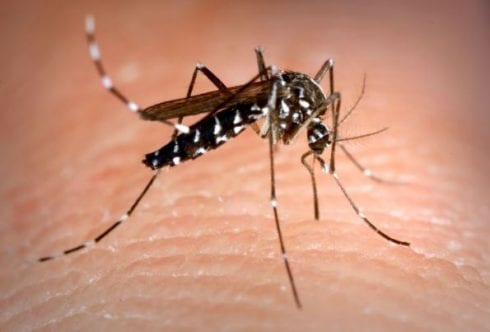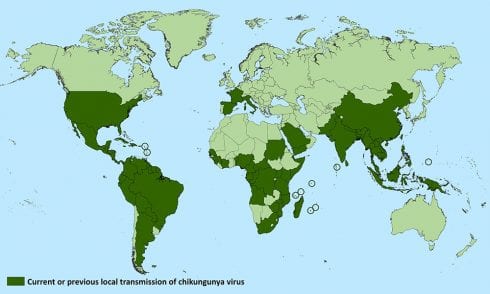THE first chikungunya outbreak has been recorded in Spain as three tourists on the Costa Blanca were confirmed infected.
The infection was confirmed from Reykjavik, where the three Icelandic tourists returned after holidaying in Alicante at the end of May.
The first case was recorded as a 37-year-old woman entered a Reykjavik hospital suffering a high fever on June 1.
By June 8, analysis confirmed the virus to be chikungunya – the first localised transmission recorded in Spain.
The woman’s sister and niece also tested positive to the virus.
The Generalitat Valenciana received the health alert from Spain’s Coordination Center for Health Alerts and Emergencies (CCAES), under the Ministry of Health, last Thursday.
Chikungunya is transmitted by one insect: the tiger mosquito (Aedes albopictus).

The virus is characterized by the sudden onset of fever, chills, conjunctivitis, low back pain, stiffness and intense joint pains.
The incubation of the disease can be up to 12 days.
It usually occurs in a period ranging from one to two weeks, although about half of sufferers experience discomfort in the extremities lasting months.

There is no vaccine or specific antiviral treatment, so care is focused on palliating the pain.
The name chikungunya comes from the Kimakondé language of the Makonde tribe, who live in Tanzania and Mozambique, and means ‘to walk doubled’.
Spain’s Public Health body is planning to launch an active surveillance plan in primary care centres, and the Hospital de Alicante will remain on alert to detect possible new cases.
The route of transmission of the disease is the bite of a mosquito that ‘has bitten a person who already had the virus after arriving from an area where the disease is endemic’, explained Ignacio López-Goñi, Professor of Microbiology at the University of Navarra, to El Pais.

López-Goñi pointed to ‘climate change’ as one of the causes of the arrival of the disease in Spain.
“These tropical diseases have ceased to be so,” he said.
“Even if they are only a few degrees of temperature increase, they are enough for species such as the tiger mosquito to settle in Spain.”
The tiger mosquito was first identified in Spain in 2004 in San Cugat del Vallés (Barcelona) and is currently widely disseminated in most of the Mediterranean coast and many inland areas of Spain.
Although other European countries such as Italy and France have already suffered intermittent outbreaks of chikungunya since 2007, Spain has not yet registered any case of local transmission of the virus.
In 2015, chikungunya was attributed to an illness suffered by a person holidaying in Gandia, although subsequent research revealed that it was a ‘false’ analysis.
López-Goñi did not consider it probable that there will be ‘a massive outbreak in Spain’, however.
Click here to read more Spain News from The Olive Press.








